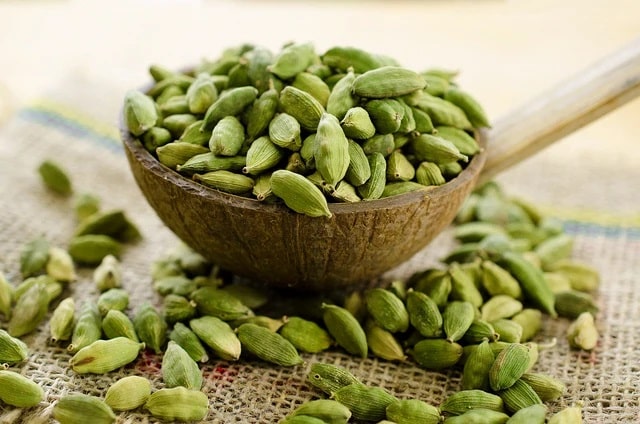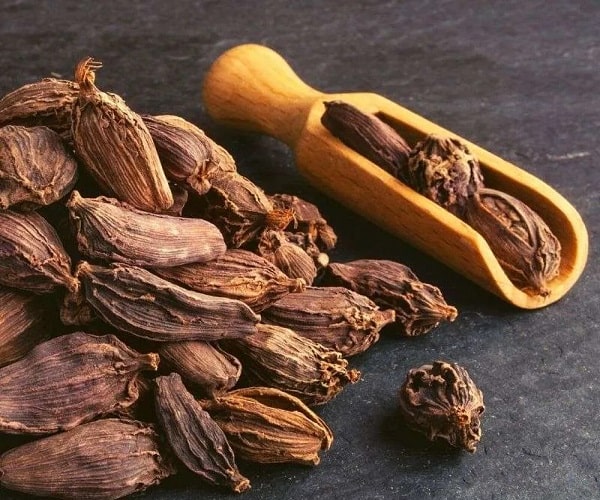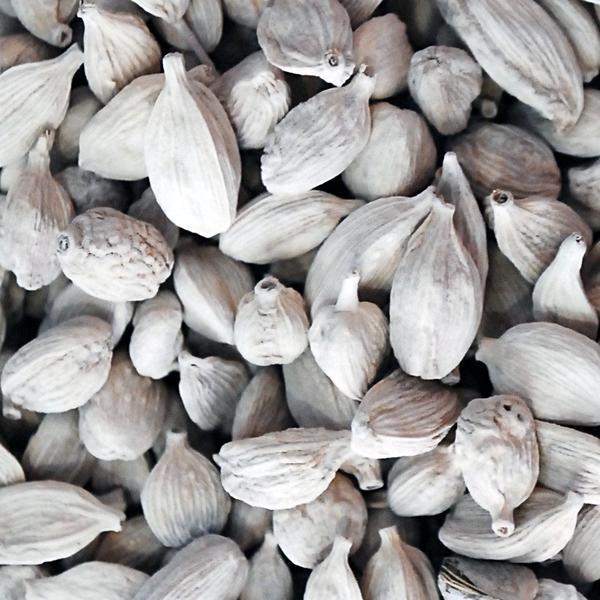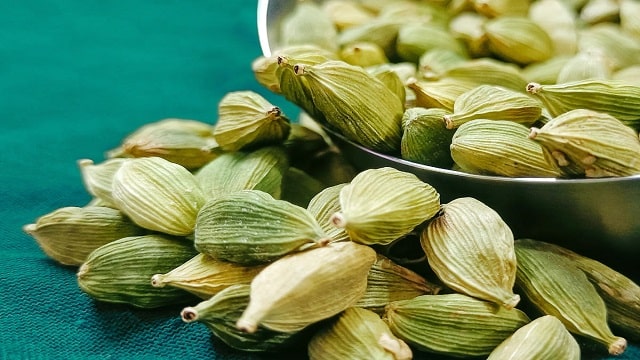Cardamom is an ancient spice that takes care of our heart, reduces flatulence, helps prevent cancer, and decrease inflammation. Its culinary uses are as enriching as its history, covering sweet, savory and beverages. Today, all about its origin, benefits, and uses.
Cardamom is a spice that protects our cardiovascular system, takes care of our digestive system, prevents cancer, and reduces inflammation. The culinary uses of cardamom are ancient, and centuries ago, it was part of ceremonies and rituals. In the kitchen, it adds a fresh touch to cakes, pies, savory dishes, and drinks, even daring to stand out among cocktails. Below are all the reasons why having some cardamom seeds at home can be a great idea.
What is cardamom and what is it used for?
Cardamom (Elettaria cardamomum ) is an aromatic spice with medicinal uses that is used in the preparation of curry and chai tea. It comes from a herbaceous plant native to India that dates back to before 3000 BC and can reach 4 m in height.
Its flowers are white and the seed pods are obtained from them. The propagation of the plant, however, is carried out thanks to the rhizome, the horizontal underground structure with sufficient storage of nutrients to give rise to new plants. The altitude suitable for its cultivation is between 1000 and 1500 m, the optimum temperature is 22 °C to 24 °C and it appreciates being slightly shaded. Cardamom fruits are harvested every 3 to 5 weeks and the colour can vary as they ripen depending on the crop, although the general procedure compiled by the FAO includes immersing the seeds for 10 minutes in 2% sodium carbonate which contributes to the uniformity of the unique green tone of the pod.
On the other hand, cardamom belongs to the same family as ginger and turmeric, which gives it a peculiar flavour with a pungent note. Among its many uses, cardamom is used to enhance dishes and in infusion, it has proven to be an ally against gas and inflammation. Due to its peculiarities and the expansion of Indian specialties throughout the world, it has become the third most expensive spice, behind saffron and vanilla.
What does cardamom taste like?
Cardamom has a complex, fruity aroma, with aromas of mountain dew and a slight minty touch. It combines very well with citrus, and sharing ancestry with ginger gives it a slight contrast with sweet notes.
Origin and history of cardamom
Cardamom dates back to 3000 BC in southern India. In Asia it has been used as a condiment, medicine, and ceremonial spice, being one of the spices thrown into a ritual fire to seal a new marriage. The mention of cardamom already appears in Charaka Samhita and Susrutha Samhita, the Vedic texts from India dated to 1500 BC. It was also present among the more than 200 plants that the Assyrians and Babylonians used for medicinal purposes, to the point that King Merodach-Baladan II planted cardamom in his own garden. In contrast, cardamom was not mentioned in Egyptian texts, although they are believed to have been devoted consumers.
In the case of the Greeks and Romans, there is a certain ambiguity. Cardamom appears in various texts as a reflection of luxury, as a perfume, as a powerful aphrodisiac, and even Dioscorides mentioned the digestive function of the seed in his treatise Materia Medica. However, authors such as Linschoten, a Dutch traveller and writer from the 17th century, suspected that what the Greeks and Romans were describing was often black pepper and not cardamom. Confusion about Indian spices was present throughout time; for example, the Roman soldier Pliny the Elder believed that cardamom was originally from Arabia rather than India.
In any case, when the Arab spice route fell and Portugal became one of the main traders, black pepper and ginger took the lead, and cardamom was relegated. It was not until the beginning of the 19th century that cardamom became of great interest again and cultivated together with coffee, it colonised the region known as the Cardamom Hills in India. After centuries of tradition and the extension of cardamom plantations from Sri Lanka to Latin America, Guatemala is the main exporter of this seed, ahead of India.
Types of cardamom
If we stick to taxonomy, there is only one species of cardamom, the green cardamom also known as common cardamom or true cardamom ( Elettaria cardamomum). However, there are a couple of varieties of different origins, but similar qualities, such as black cardamom and white cardamom.
Green Cardamom

Green cardamom is native to India. In the beginning, it was found as far away as present-day Malaysia. Today, the world’s main exporter is Guatemala, although it remains the condiment par excellence for curries and chai tea, both Indian preparations.
Black cardamom

Black cardamom ( Amomum Subulatum ) is native to Nepal and also comes from the ginger family, just like green cardamom. Gastronomically, black cardamom is more suitable for very spicy dishes and is not the ideal substitute for green cardamom, but is considered an interesting seed as a condiment for other types of specialties.
White cardamom

White cardamom ( Elettaria cardamomum ) is derived from the blanching of green cardamom pods. This variant is believed to have been originally developed for aesthetic reasons. Apparently, there was commercial interest in imitating another Chinese seed ( Amomum kravanh ) which is useful for lightly flavouring soups, breads, and sweets.
Nutritional value
Cardamom is not particularly notable for its vitamin and mineral content, although its protein and fibre content is not insignificant. The latter supports the digestive qualities of cardamom, while the amount of protein helps to round out the minimum amounts required in vegetarian diets.
- Energy (kcal) 311 kcal
- Carbohydrates (g) 0
- Fats (g) 0
- Proteins (g) 10.8
- Fiber (g) 28
Properties and benefits of cardamom
Among the most recent bibliographic reviews, the lack of more scientific studies with humans to confirm the benefits of cardamom is highlighted. Despite this, a large number of animal studies and some clinical research have demonstrated the protective role of cardamom at the cardiovascular and digestive levels, as well as its potential role in preventing obesity and cancer.
Regulates sugar and prevents obesity
Hyperglycemia, i.e. high blood sugar levels, can cause vascular inflammation, microvascular damage, atherosclerosis, and alterations in the functioning of the immune system. Cardamom consumption improves the glucose profile and insulin response, an effect observed in cases of type 2 diabetes. In addition, studies with animals fed a diet rich in fat and carbohydrates who were given cardamom powder gained less weight and did not develop such pronounced insulin intolerance, which is why cardamom seed or powder is highly recommended for maintaining weight and regulating blood sugar.
It acts as an anti-inflammatory
Inflammation is a physiological process that occurs in response to infections and tissue damage in order to promote healing. The problem is that factors such as tobacco, alcohol or consumption of saturated fats can also cause the inflammatory response and make it persist over time when there is no real damage.
This scenario is associated with the long-term development of type 2 diabetes and various types of cancer. Studies have shown that cardamom consumption contributes to reducing inflammatory factors, such as IL-6 or TNF-α, present in the case of chronic inflammation, so its consumption contributes to alleviating generalized inflammation.
Take care of cardiovascular health and reduce tension
Hypertension is one of the risk factors for the development of cardiovascular diseases such as heart attacks or coronary artery disease. Several studies have shown that sustained consumption of cardamom over time can lower both systolic and diastolic blood pressure in people with grade 1 hypertension, which is why cardamom is considered a powerful cardiovascular protector.
Good for the digestive system
Popular knowledge attributes to cardamom digestive properties such as the reduction of nausea, diarrhea, and flatulence. The scientific community is still looking for the keys to how, although it seems that a possible mechanism would be the reduction of fermentation that takes place in the intestinal system and that, when excessive, causes annoying gases.
Helps prevent cancer
Cardamonin is a natural compound in cardamom that acts by activating the apoptosis signal (cell death) when it detects irregular cell division. This level of specificity has put the molecule in the spotlight of cancer research. In 2022, the University of Florida shed some more light on its potential by discovering in vitro studies that cardamonin could reduce tumor populations of triple-negative breast cancer, opening the door to cardamom’s full potential for cancer prevention.
Contraindications of cardamom
Cardamom does not have many contraindications, among other reasons due to the small doses that are ingested in some recipes. The essential oil, being concentrated, does require more attention and it is generally recommended to avoid consumption by children, pregnant women, and nursing mothers. In case of doubt, it is always important to consult with your doctor.
Recipes with cardamom and its uses in the kitchen
Cardamom seeds can be found in herbalists, spice shops, and sometimes in small quantities packaged in supermarkets. More rarely, we find the powdered version, which can also work wonders in sweet recipes.
In honor of its origins, it is only fair to start by mentioning all those recipes with cardamom that we can make thanks to the inspiration of India. The classic garam masala has a few cardamom pods. So does chicken korma, chicken tandoori masala, and all kinds of curries, since cardamom is present in the mixture.
Jumping to North Africa, cardamom is still an essential ingredient in the traditional Ras el Hanout spice mix. And if we delve into the world of baking, Sweden is the ultimate expert when it comes to using it. In the initial recipe from 1920, even cinnamon rolls included cardamom, which is still present today in specialties such as semlor or cardamom buns and speculoos cookies from Holland or Belgium. It is very common to take advantage of its aroma to decorate all kinds of cakes, such as chocolate and pumpkin cake.
Less famous is the way in which cardamom has also conquered cocktails such as the classic gin and tonic or drinks with rum, to which it adds an unexpected twist, as it does with the sweetest recipes.
